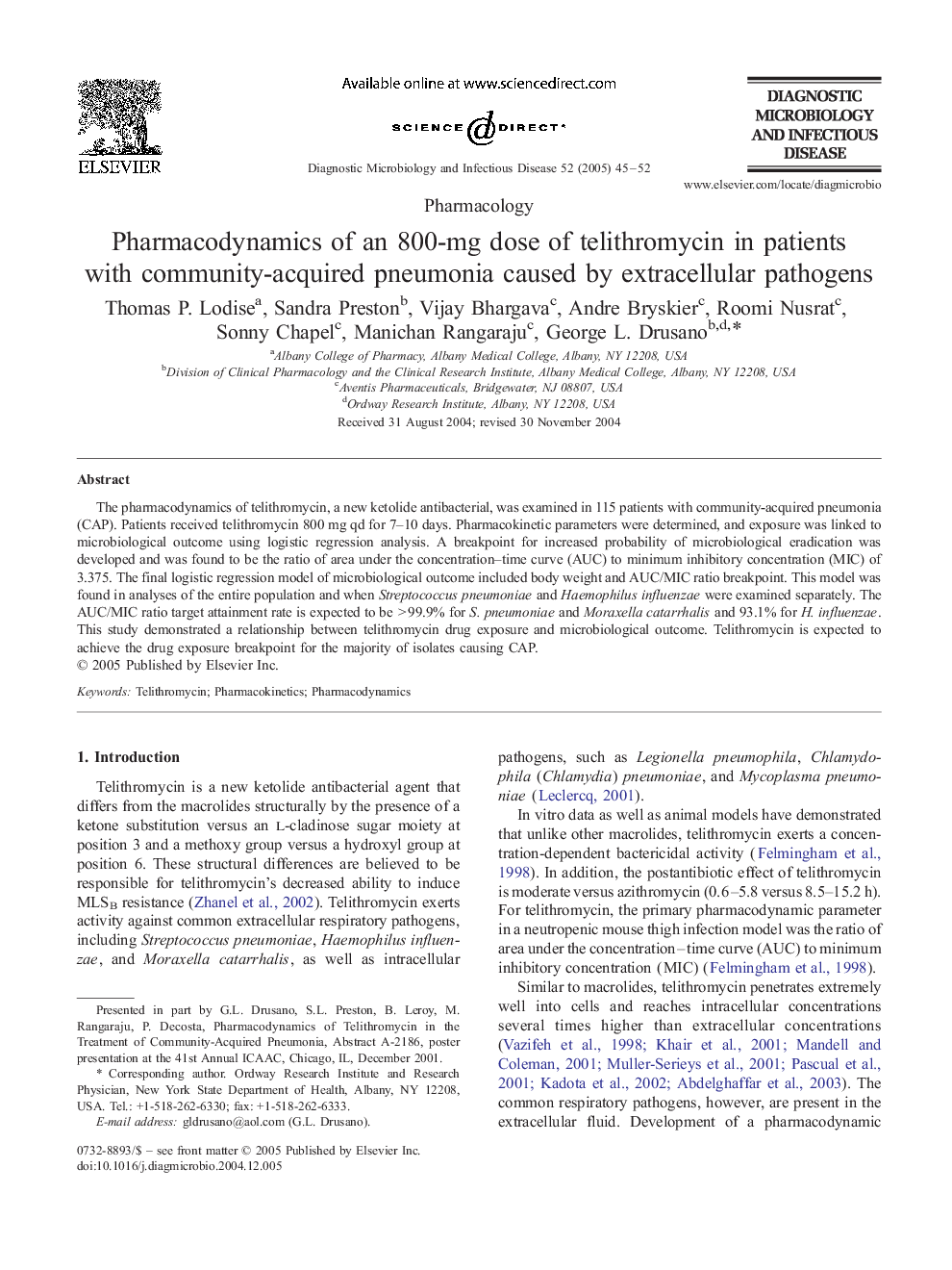| Article ID | Journal | Published Year | Pages | File Type |
|---|---|---|---|---|
| 9263656 | Diagnostic Microbiology and Infectious Disease | 2005 | 8 Pages |
Abstract
The pharmacodynamics of telithromycin, a new ketolide antibacterial, was examined in 115 patients with community-acquired pneumonia (CAP). Patients received telithromycin 800 mg qd for 7-10 days. Pharmacokinetic parameters were determined, and exposure was linked to microbiological outcome using logistic regression analysis. A breakpoint for increased probability of microbiological eradication was developed and was found to be the ratio of area under the concentration-time curve (AUC) to minimum inhibitory concentration (MIC) of 3.375. The final logistic regression model of microbiological outcome included body weight and AUC/MIC ratio breakpoint. This model was found in analyses of the entire population and when Streptococcus pneumoniae and Haemophilus influenzae were examined separately. The AUC/MIC ratio target attainment rate is expected to be >99.9% for S. pneumoniae and Moraxella catarrhalis and 93.1% for H. influenzae. This study demonstrated a relationship between telithromycin drug exposure and microbiological outcome. Telithromycin is expected to achieve the drug exposure breakpoint for the majority of isolates causing CAP.
Related Topics
Life Sciences
Immunology and Microbiology
Applied Microbiology and Biotechnology
Authors
Thomas P. Lodise, Sandra Preston, Vijay Bhargava, Andre Bryskier, Roomi Nusrat, Sonny Chapel, Manichan Rangaraju, George L. Drusano,
